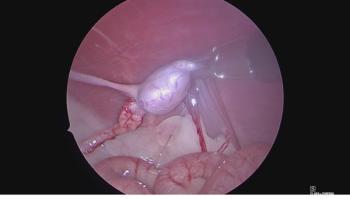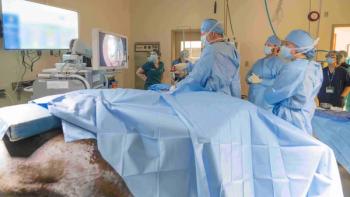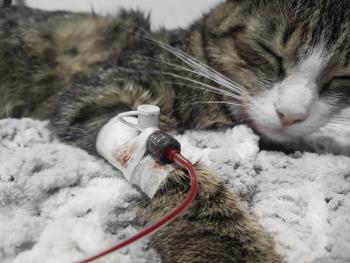
The ABCs of veterinary dentistry: S is for supernumerary teeth
Extra! Extra! Read all about how when it comes to excess teeth, more isnt always merrier for your veterinary patients.
I had no idea what “supernumerary” meant (much less how to spell it) when I first heard the term some 30 years ago. But time and experience have taught me the importance of paying attention to this dental condition that often needs immediate care.
Alphabet scoop
From anesthesia to retained teeth, peruse the ABCs of veterinary dentistry collection
Both extra and supernumerary teeth refer to the same medical condition-hyperdontia-which describes when teeth or odontogenic structures are formed from tooth germs in excess of the usual number for any given region of the dental arch. It's thought that these teeth develop from either a cleaved tooth bud caused by hyperactivity of dental lamina near the regular tooth bud or from splitting the regular tooth bud itself. Heredity may also play a role in this anomaly, as supernumeraries often occur in littermates of affected dogs and cats.
Supernumerary teeth may be single or multiple, unilateral or bilateral, and erupted or impacted. The condition is less common in deciduous (baby) teeth than in permanent teeth.
Why more isn't always merrier
Not all dogs and cats with supernumerary teeth are in trouble. Some are able to accommodate extra teeth in the arch without adverse effects. In such cases, pay close attention to these teeth during follow-up clinical and intraoral radiograph examinations for the life of the patient (Figures 1A and 1B).
Figure 1A. A feline patient with two left maxillary second premolars. No treatment was necessary at the time the photo was taken. (All photos courtesy of Dr. Jan Bellows)
Figure 1B. A canine patient's rostral maxilla accommodating seven incisors without excessive crowding.
However, supernumerary teeth can cause several problems, as described below:
Eruption failure. The presence of a supernumerary tooth may cause a mechanical blockage of the eruption pathway that prevents a permanent tooth from erupting normally, leading to either partial or complete eruption failure (Figures 2A-2D). The resulting unerupted tooth is predisposed to dentigerous cyst formation, with an enlarged follicular sac often noted clinically and on radiographic examination (Figures 3A-3D).
Figure 2A. A patient with supernumerary left maxillary first, second and third incisors.
Figure 2B. Rostral view of the patient from Figure 2A with supernumerary left maxillary first, second and third incisors.
Figure 2C. A radiograph of the patient from Figure 2A revealing an impacted incisor due to mechanical obstruction in addition to the supernumerary teeth.
Figure 2D. A postoperative radiograph of the patient from Figure 2A after the extraction of the supernumerary and impacted teeth.
Figure 3A. Large swelling is present near the left maxillary canine tooth.
Figure 3B. An intraoral radiograph of the patient from Figure 3A revealing a large cyst and an unerupted first premolar.
Figure 3C. Surgical exploration in the patient from Figure 3A revealing an unerupted supernumerary first premolar and dentigerous cyst.
Figure 3D. Closure of the cyst in the patient from Figure 3A.
Displacement. The presence of a supernumerary tooth may cause one or more permanent teeth to become displaced (Figures 4A-4C). The degree of shift can range from a mild rotation to complete displacement, resulting in interference with adjacent or opposing teeth (Figure 5).
Figure 4A. A right mandibular first premolar displaced caudally due to an impacted supernumerary first premolar.
Figure 4B. A radiograph of the patient from Figure 4A with a right mandibular first premolar displaced caudally due to an impacted supernumerary first premolar tooth.
Figure 4C. A postoperative radiograph of the patient from Figure 4A confirming the extraction of the first premolar.
Figure 5. Bilateral supernumerary maxillary third premolars in a cat that are displacing the adjacent third premolars.
Crowding. Erupted supernumerary teeth most often cause crowding (Figure 6). The decreased space between the affected teeth may result in advanced periodontal disease. Crowding may be resolved by extracting the most displaced or deformed tooth to stop food from becoming entrapped.
Figure 6. Two left maxillary supernumerary third premolars in an English bulldog.
In cats predisposed to plaque-induced inflammation (gingivostomatitis), supernumerary teeth create plaque-retentive surfaces for stomatitis to proliferate (Figures 7A-7C). Extraction of the supernumerary teeth and teeth affected by periodontal disease is usually curative (Figure 7D).
Figure 7A. An inflamed caudal oral cavity on the right side of the patient's mouth.
Figure 7B. A close-up image of the patient from Figure 7A revealing inflammation surrounding the right supernumerary mandibular fourth premolar.
Figure 7C. A radiograph of the patient from Figure 7A confirming a supernumerary third premolar.
Figure 7D. Resolution of inflammation in the patient from Figure 7A three weeks after extracting the right mandibular cheek teeth.
What to do when there are too many teeth
The management of a supernumerary tooth should form part of a comprehensive treatment plan and should not be considered in isolation. Treatment depends on the type and position of the supernumerary tooth (Is it erupted or nonerupted? What is the stage of the crown and root development?), as well as its effect or potential effect on adjacent teeth (What is the distance between the supernumerary tooth and the roots of adjacent teeth? What is the condition of the dentition? Is there malocclusion or crowding?).
When to extract the extras
Supernumerary tooth extraction is recommended when there is:
- associated pathology(dentigerous cyst) or tooth support loss (periodontal disease)
- crowding that compromises the normal self-cleaning process (Figures 8A, 8B and 9).
Figure 8A. A patient with supernumerary maxillary third incisors.
Figure 8B. The supernumerary teeth in the patient from Figure 8A were preemptively extracted before pathology could occur.
Figure 9. A right mandibular supernumerary fourth premolar in a cat. This created an environment for advanced periodontal disease to develop, thereby necessitating the extraction of all the right mandibular cheek teeth.
However, if a patient's supernumerary teeth don't appear to cause adverse effects on adjacent soft tissues or teeth (e.g. adjacent teeth are able to erupt satisfactorily and there is no associated pathology), it's reasonable to decline or delay surgical intervention and regularly monitor them instead.
Looks aren't everything
As with many veterinary dental conditions, it's important for your clients to understand that your concern is for the patient's health-not cosmetics. Educate yourself on the complications that can arise from supernumerary teeth so you're ready to pass on the knowledge to your clients if and when the time comes to benefit your patients.
Dr. Jan Bellows owns All Pets Dental in Weston, Florida. He is a diplomate of the American Veterinary Dental College and the American Board of Veterinary Practitioners. He can be reached at
Newsletter
From exam room tips to practice management insights, get trusted veterinary news delivered straight to your inbox—subscribe to dvm360.



